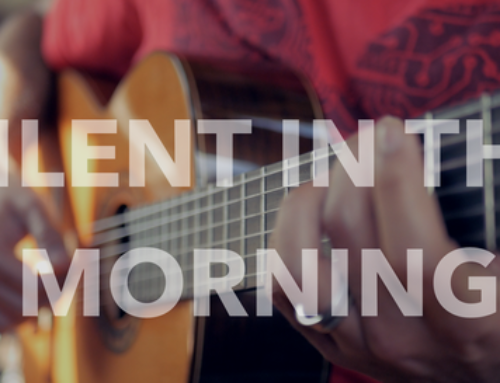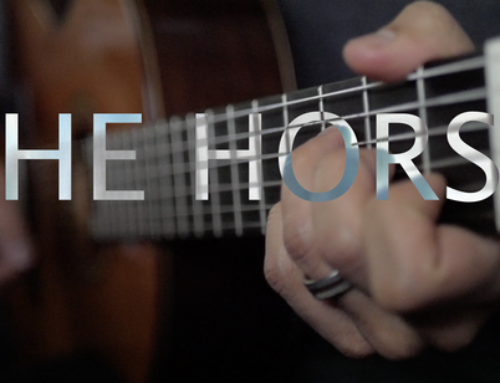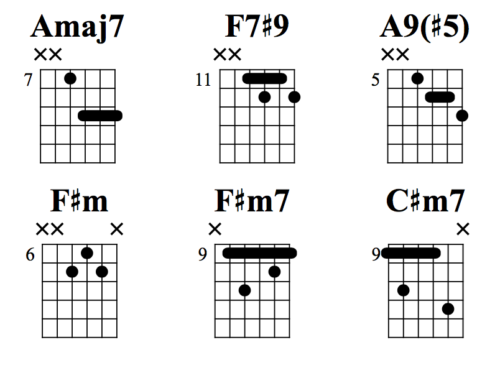In this lesson, we'll look at Jerry Garcia's first two solos from Deal, from July 4, 1989. I'll provide an analysis of the chords in the song, and we'll discuss the melodic techniques that Jerry uses in his licks. We'll talk about what makes Deal so challenging to play over, and how Jerry Garcia was able to overcome those challenges so easily.
If you'd like a PDF copy of the tab and lyrics sent right to your inbox, keep scrolling down.
Grab your guitar and let’s dive in!
Gear Used for This Video
Video Recording:
Performance:
- Original 1966 Fender Deluxe Reverb Amplifier with
- Pickboy Pos-a-Grip Jazz Classic Tortoise Shell Cellulose 1.50mm Picks
- Planet Waves Custom Series Right Angle Guitar Cable
Audio Recording:
- MXL 990 Condenser Microphone with Shockmount (vocal capture)
- Sennheiser E609 Silver Super Cardioid Instrument Microphone (guitar capture)
- Audix CABGRAB1 CabGrabber Mic Clamp for Guitar Amps/Cabinets (holds Sennheiser e609 to guitar cabinet)
Part I – Harmonic Analysis
Deal was written by Jerry Garcia and Robert Hunter, and debuted in 1971. It is one of the more challenging rock songs to solo over.
Here are the chords in this song, and the progression that the rest of the band is playing underneath Jerry. The chords you see here are Jerry’s canvas.

Deal is full of very sophisticated and beautifully written chord movements. Before we go on, keep in mind that there are multiple ways to interpret this song, and this is just one of many ways to look at these chords.
We start off with an A, and end up with C#7. This right here, is a key change. Jerry Garcia likes to think of the C#7 and the F#m chords as a V-i progression in F#m, and we know that, by the chord tones and scales that he uses in this solo, which we’ll talk about later.
Then we’re briefly back to they key of A for two chords, and then we have a passing chord, D#dim that is outside the key of A. This diminished chord almost tricks the ear into thinking that we’re going from D to E, but we’re not! We’re going back home to A.
By the time we Get to that A, we have already changed keys twice. Once from A to the C#7, once from the F#m to the E.
In the next four bars, we have one key change going from A to F# . then we’re in the key of B, then we’re back going back to the key of A for the D chord.
That leaves us with 5 key changes in 8 measures. A song like this is challenging for many soloists because each new key presents a different set of notes to work with.
Part II – Jerry’s Approach to Improv
A year ago from this performance, Jerry sat down with Guitar Player magazine to share some secrets behind his approach
“You need to have enough access to the fingerboard that you’re not hung up about what where you are. In other words ‘What Key am I in? What scale interval am I at?’ You need to be able to let that go past you. I’m just getting into being able to get a good sound, regardless of the structure or mathematics. So much of the guitar is patterns. But if you look at it right, patterns start to melt into each other; pretty soon you can hit anything from anywhere.”
-Jerry Garcia in Guitar Player Magazine, July 1988
This means that jerry has mastered access to the fingerboard. He could play pretty much any arpeggio or scale, in any key, in any position on the neck. He put years of hard work instilling that muscle memory.
That is crucial, because this solo is completely improvised, he is composing the notes as he plays them.
Let’s look at how Jerry improvises the beginning solo. He plays an A major arpeggio over the A chord, a C#7 arpeggio over the C#7 chord. Then he targets notes of the F#m arpeggio over the F#m chord.
That means that Jerry treats the first three chords as three completely distinct little entities. He addresses each one like they’re unique, because they are.
Over the E and D chord, he uses notes of the A major pentatonic scale, while focusing on scale tones that happen to be within the chords that he’s playing over. Over the D#dim chord he uses notes of the D#diminished arpeggio.
Part III – Jerry & The Band
When Jerry Garcia, or any musician, improvises a solo in a live setting, they are simultaneously juggling with 3 realities, or relationships.
- The relationship between the soloist and the band
- The relationship between the soloist and the audience
- The relationship between the soloist and themselves
Let’s focus on the first one – the relationship between the soloist and the band. This is a real balancing act, because the soloist, Jerry in our case, wants to really listen and react to what the rest of the band is playing. And the band wants to do the same for him.
Jerry doesn’t necessarily know how cycles he’s going to play the form, and the band doesn’t know either. How many times are they going to go through these chords supporting Jerry’s soloing, before he goes back to singing the verse? I’ve heard version of this song where he goes through the form once, i’ve heard versions where he’s gone through it four times.
Throughout the solo, Jerry is communicating this information with the band through music. For example, towards the end of the first solo, he plays this exciting ascending lick – signaling that he’s going for another round of the solo, and that because he came in so strong, this round is probably going to be a bit louder and more intense than the last one. And guess what? That’s exactly what happens. Jerry really cooks throughout the second solo.
The second solo really takes off and the band is raising their intensity level to complement what Jerry’s doing.
But how does the band know that he’s done playing, and ready to go back to singing the next verse? You could say that Jerry takes some steps towards the mic, and that’s the signal.
That’s true, but it’s not like the entire band is visually fixated on him. Jerry gives a slight signal telling the guys that he’s wrapping up his solo, by playing fragments of chords mixed in with single notes. This is one kind of a universal signal that you’re going to end your solo. You’ll hear polyphonic instruments in country, jazz, blues use this technique all the time.
This is just one aspect of how Jerry is communicating with the band during an improvised solo.
For any of you fellow guitar players that may be interested, I’ve broken this complete solo down into many individual videos. These videos will teach you how to play this solo step by step, and you’ll learn the music theory that Jerry is using.
This is a mini course that i’ve made available for free on youtube.
I recommend that you learn one lick a day, instead of binging through the whole course in one sitting. That’ll keep you busy and pushing your boundaries on the guitar for nearly two weeks, or more. Make sure to like this video and subscribe to this channel if you haven’t already!
Jerry Garcia's First Two Deal solos from 7-4-89 Deal with the Grateful Dead
Want this PDF sent to your inbox?
Enter your email address and I'll send you a copy in less than 30 seconds















Leave A Comment